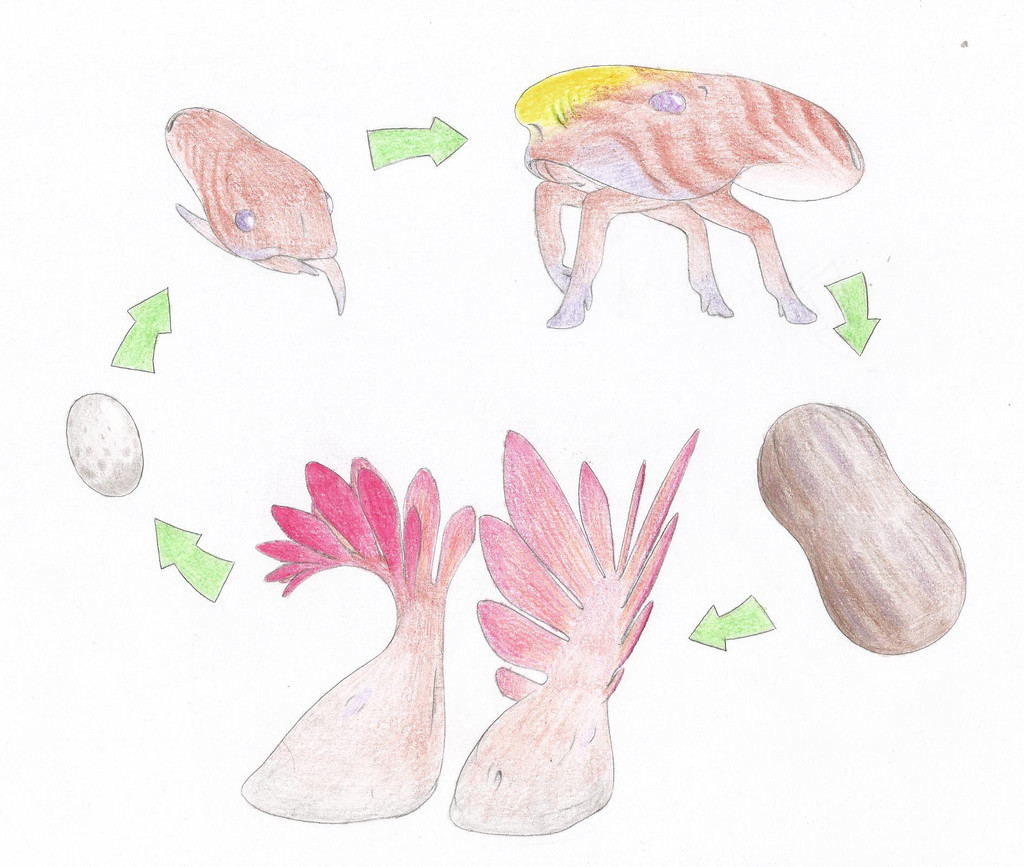HOME | DD
 Biofauna25 — Bulorespis Life Cycle
Biofauna25 — Bulorespis Life Cycle

Published: 2014-04-20 22:49:34 +0000 UTC; Views: 2699; Favourites: 44; Downloads: 0
Redirect to original
Description
The Bulbocula Class makes up the bulk of large animals on Odin’s surface. The jointed, articulate mouthparts of their ancestors have evolved into limbs whose primary purpose is locomotion. And they have adapted what were once sensory tendrils into feeding paraglossae. They are extremely diverse and live in a range of habitats, filling a great number of niches.
Bulorespis species have a life cycle with five stages: egg, nymph, mobile adult, pupa, and sessile adult. The eggs develop relatively quickly and hatch into a nymph within a few days of being laid. As the nymph grows into a mobile adult, it develops keratin in plates to reinforce the skin and protect itself from enemies. After a few years in this form, it becomes a pupa in which it changes into a sessile adult; in Bulorespis species, this is a bit of a misnomer, as individuals in the sessile adult form are able to move, sliding along as they feed on biosnow. They scatter eggs as they go, continuing the cycle and doing their best to ensure the next generation.
The reproductive display appendage of Bulorespids grows and degenerates with the approach and conclusion of the mating season, the coloration on it following the same pattern. Those that will be illustrated here will be drawn at peak mating condition.























